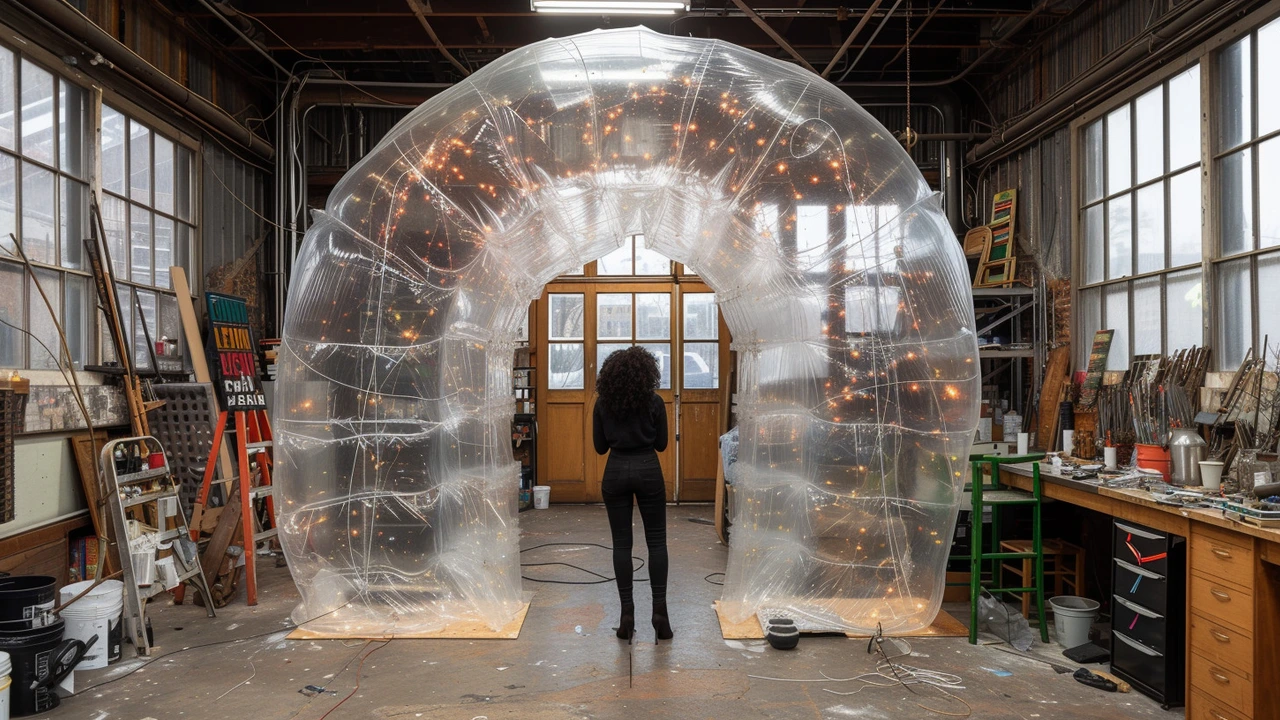Immersive experience in art: how to feel and create powerful work
The art that sticks with you isn't just seen—it's felt. Immersive experiences pull you into another world, whether it's a dark room humming with sound, a land artwork you walk through, or a photoreal painting that tricks your eyes. This page collects clear, usable tips so you notice more when you visit and add real impact when you make work.
How to experience immersive art
Slow down. Most people skim displays. Spend at least five minutes with a single piece and watch what opens up. Use more than your eyes: listen for layered sounds, feel temperature or draft changes, and notice how light shapes materials. Read a short label before entering and then again after you leave—context can flip how you feel about a piece.
Pay attention to scale and movement. Big installations use your body as part of the work; small, photoreal pieces manipulate distance and detail. Step back, then move close. Walk around, change angles, and let unexpected views appear. If the piece allows interaction, try the simplest action first and then test subtler options—artists often hide small surprises that reward repeat engagement.
Put your phone away sometimes. Photos are handy, but being present strengthens the memory and emotional response. If you do take photos, capture one detail and one whole view, then close the camera and stay. After your visit, jot one sentence about how the work made you feel—this trains your eye to notice what truly matters in immersive design.
How artists build immersive experiences
Start with one clear idea. The best immersive works are focused: every element backs the central concept. Pick a dominant sense—sight, sound, or touch—and add supporting details. For instance, an installation about memory may use dim light, a repeating audio loop, and familiar textiles to cue nostalgia without spelling it out.
Control the environment. Light, sound, temperature, and scent guide attention more reliably than complicated visuals alone. Use scale to shape emotion: oversized structures can create awe, tight spaces can provoke unease. Plan the entry and exit so the audience travels through a narrative, not just a collection of objects.
Make interaction simple and dependable. Physical touches, brief shared tasks, or a short AR layer work best when they are reliable. Broken tech or confusing instructions kills immersion quickly. Test with real people and remove anything that distracts from the main idea.
Think about access and flow. Provide clear signage, quiet zones, and seating where people need a moment. Consider sensory-friendly versions or scheduled quiet hours so more visitors can enjoy the work. Accessibility choices often improve the experience for everyone.
Finally, give viewers a small invitation rather than a full explanation. One sentence that hints at context or offers a small task—"Listen closely for footsteps in the wall"—is enough to guide exploration without spoiling the effect. Immersive art works when it surprises people and gently steers them toward meaning.
Want examples? Check installation art, photorealism, and land art pieces for different approaches to immersion. Try the tips on your next gallery visit or use them when planning an exhibit—small changes in light, sound, or entry sequence can make a big difference.

